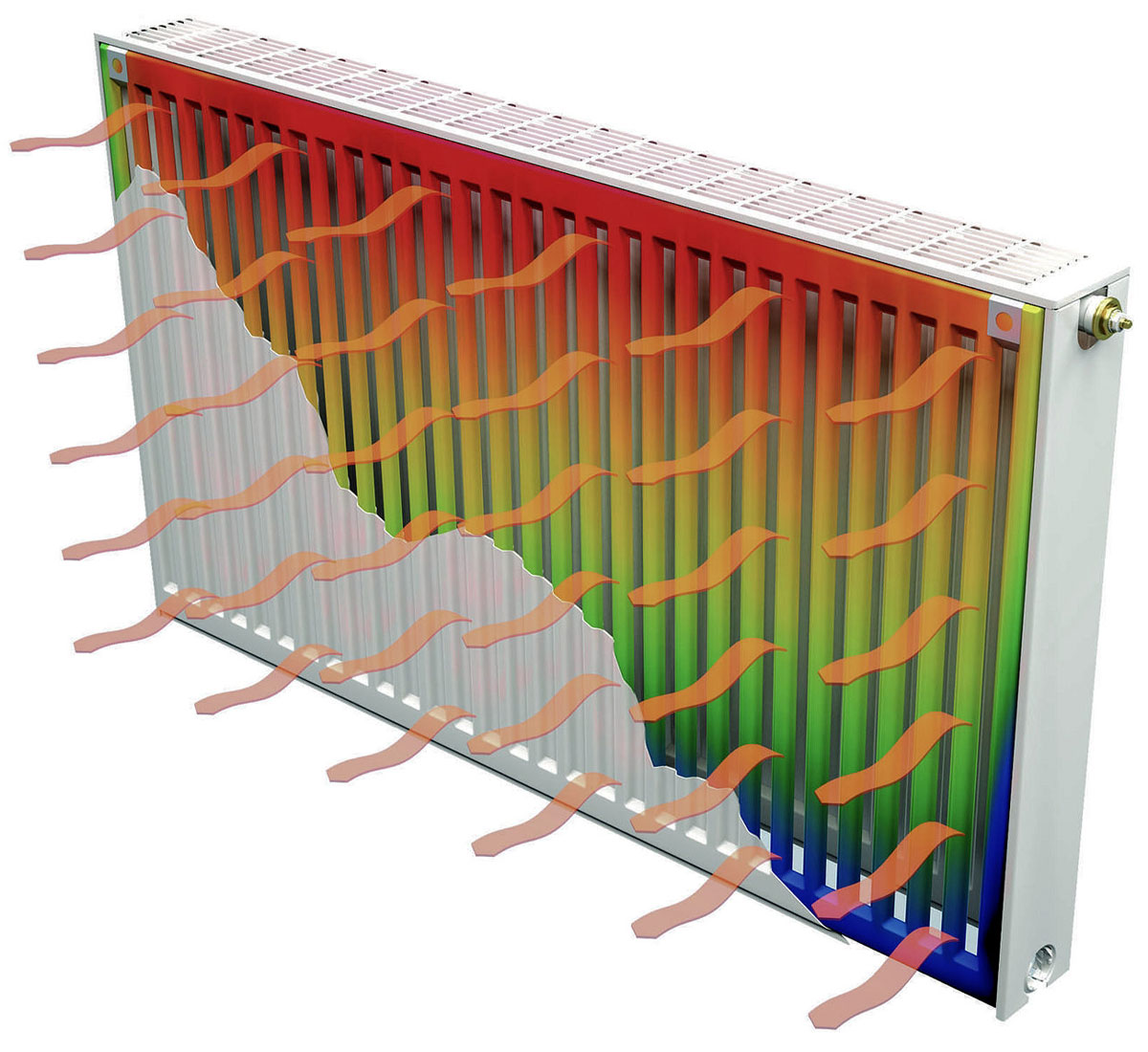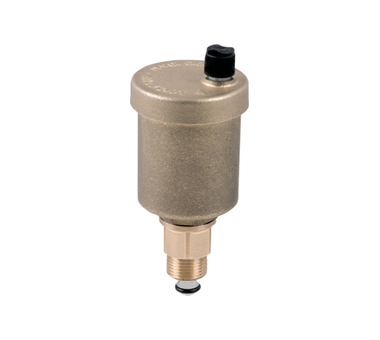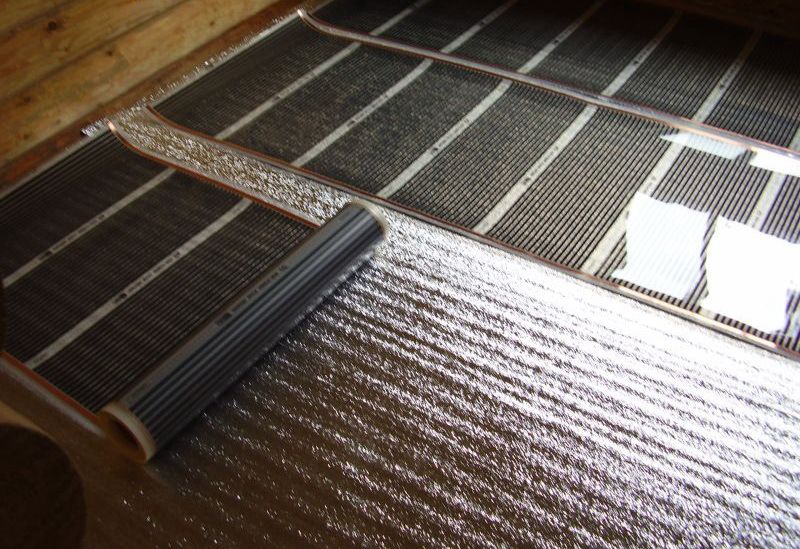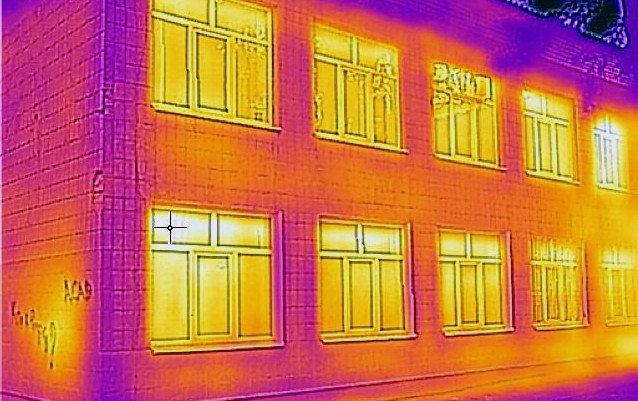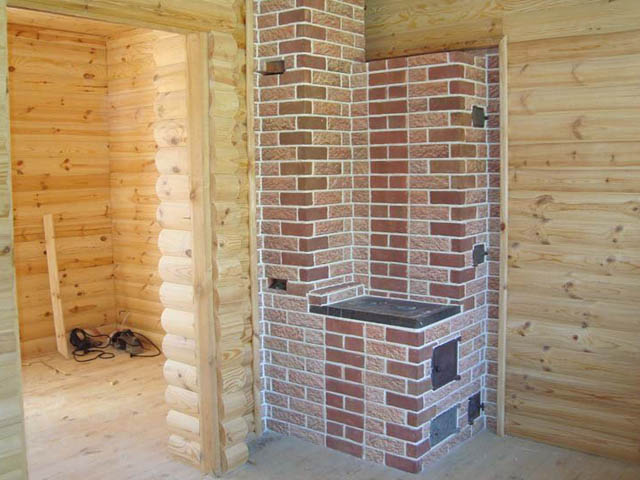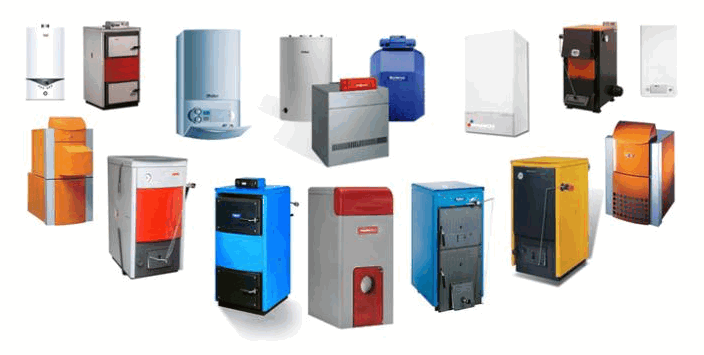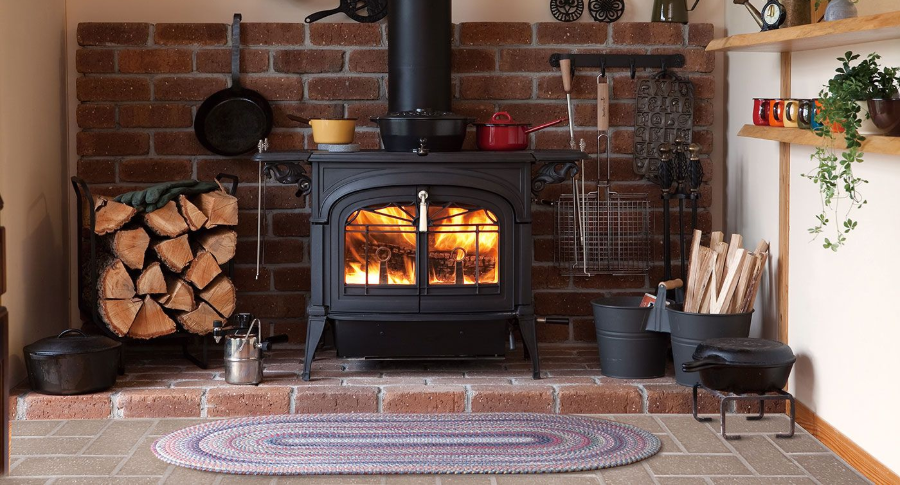Heat losses seriously increase heating costs. The part of the wall behind the radiator is the place with the maximum heat loss, therefore it is recommended to install a heat reflector there. Reflective surfaces are used to direct heat flows into the interior. They are applicable for complex structures with corners and bends. The heat shields behind the heatsink are made of a variety of materials, often with a foil surface. With their help, it is possible to increase the efficiency of the heating system by an average of 20%, which leads to an increase in the temperature of the heated room by 2-3 ° C.
Operating principle
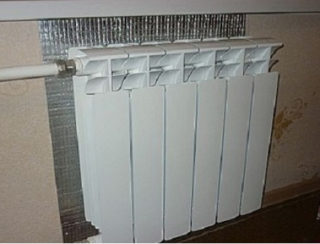
There are several main ways to transfer heat from one coating to another:
- thermal conductivity, which is the ability to conduct heat;
- convection, during which heat is transferred through the air;
- radiation associated with the release of a heat wave by heated bodies.
These processes are associated with heat loss, which can reach several tens of percent. To maximize the effect of thermal insulation, they need to be reduced. This can be done using heat-reflecting screens with a foil surface. This type of insulation works according to all the principles of heat exchange and inhibits the processes of heat loss.
Screen materials
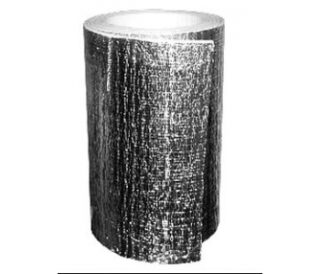
The reflective screen is made from the following materials:
- Folgoplast SP. This is an analogue of insulation, which is a self-adhesive film with a layer of foil. It is made of polyethylene foam. The material adheres well to various surfaces. It has high thermal insulation properties, does not absorb moisture, does not rot and is environmentally friendly. Suitable for residential installations.
- Folgoplast SPMP. This is aluminum foil, which is covered with a layer of metallized mylar film. It protects the material from mechanical damage and oxidation.
- Folgoplast P. A material in which there is no adhesive base on aluminum foil.
- Folgoplast PMP. A layer of foamed polyethylene, which on one side has a metallized lavsan film.
For installation behind the radiator, foam in various modifications can be used.
Using reflectors
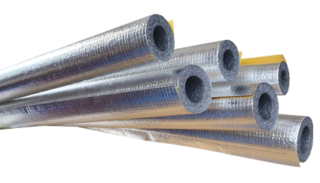
Heat shields can be used for a variety of purposes. The main area of application is internal insulation of premises of different purpose, mainly residential. Thanks to the reflective surface, all the heat from the radiators is directed into the room. This can be done in two ways. The first option is to create two air gaps between the wall and the material, as well as between the insulation and the cladding. For this, TIM with double foil is used. You can also make a gap between the outer wall and the insulation. In this case, a material is used that has one foil surface. The foil should always be directed towards the interior of the room.
The heat shield can also be used for the roof. It creates thermal and vapor insulation, protecting the roof from moisture.
Reflective surfaces have found their way into pipe insulation and ventilation. In this case, insulation with foil on both sides is used. For pipes with a diameter of less than 159 mm, an air gap is not required, in other cases it is required.A fastener is created from foil film rings at a distance of 300-400 mm from each other, wrapped with insulation on top. It is also possible to lay 10 × 10 mm or 20 × 20 mm wooden blocks along the pipes, and insulation on top. All joints are sealed with aluminum tape.
Mounting a screen behind a heating radiator is one of the most popular applications. Energy source prices are constantly rising, so it is important to keep as much heat in the house as possible. In the space between the battery and the wall, the greatest heat loss is noted, therefore, self-installation of the screen in this place will significantly reduce costs.
Product design
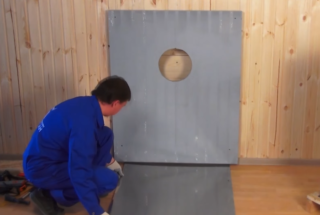
A reflective screen for a heating battery is made of materials, the main property of which is low thermal conductivity, not exceeding 0.05 W / m * C. All screens have a layer of insulation. The sheet consists of a foil and an interlayer that retains heat.
Foamed polyethylene is often used as insulation. It has good thermal insulation properties, technical characteristics and low cost. Basalt cardboard is mainly used for thermal protection of furnaces.
Frontal reflectors for radiators in saunas are a good replacement for brickwork. They allow you to increase the temperature and heat adjacent rooms. The thickness of the steel sheet must be at least 0.8 m. Silicon paint is used as a coating.
Installing screens under a wooden covering on the wall in the steam room increases the safety of the room. Aluminum foil acts as a screen, the joints between the sheets of which are sealed with special metal tape. It is used if the temperature of the outer walls of the furnace is not higher than 400 ° C.
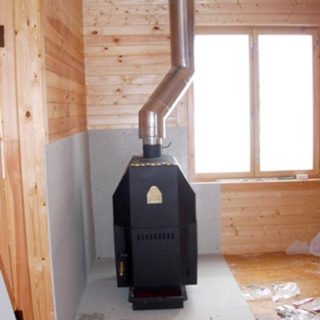
The main advantages of heat reflecting screens:
- Wide range of applications. They are suitable for installation at home, in shopping centers, baths, industries and other residential and non-residential premises.
- Achieving energy savings by keeping the heat in the room.
- Ease of installation. There is no need to call the wizard to install the screen for the battery.
- No specialized care and complex maintenance required.
- Light weight and flexibility. No special conditions are required for transportation.
- A wide selection of materials from any price range.
- Low thermal conductivity.
- Easily cut into pieces of the required size using a regular construction knife.
- Moisture protection.
- The possibility of insulation of internal surfaces.
- Provides a reflection of heat waves with an efficiency of 97%.
You can buy the screen in specialized stores.
Installation features
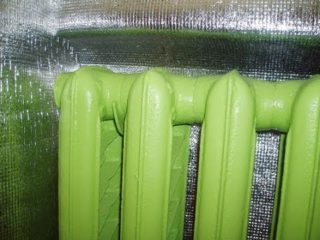
To maintain a comfortable temperature in the house, a heat reflector is placed behind the radiator and pipes. It saves about 10% of heat. When choosing a material for installation, it must be borne in mind that the dimensions of the sheets must be larger than the heating battery. The type of connection of the radiator is also taken into account.
The heat-reflecting shield can be attached to a construction stapler. You can install it yourself according to the manufacturer's instructions.
Basic tips from experts in installing the screen for the battery:
- Better not to buy a matte metallized material. Polished foil is more suitable as a heat reflector.
- For installation behind the radiator, a one-sided heat-shielding foil is sufficient. Double sided is used for other purposes. Its cost is higher, and the efficiency will not change.
- A fence of 1-2 cm should be left on both sides of the insulator. Due to the presence of the distance, the optimal thermal resistance of the reflector will be obtained, the screen will be able to effectively reflect all the heat into the room.
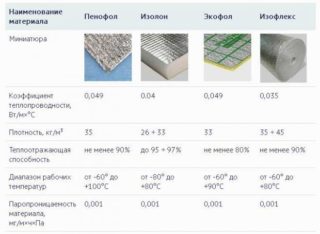
Rules for installing a reflector behind a radiator:
- It is necessary to ensure the tightness of the screen. To do this, all joints are sealed with metallized tape.
- Effectiveness is achieved only when using metallized aluminum foil. In the case of using a material with a metal spraying or produced by a thermal method, the desired effect will not be achieved. This is due to the small thickness of the metallic reflective layer.
- If it is impossible to put a professional reflective screen, you can make an independent reflector. To do this, take plywood and cover it with foil or use galvanized sheet metal.
- The effectiveness of the screen is directly related to the distance between the reflector and the battery.
- The insulation thickness must be at least 5 mm.
- The reflective surface must point towards the radiator.
Installation is done with a stapler, liquid nails, or other adhesive recommended by the manufacturer.
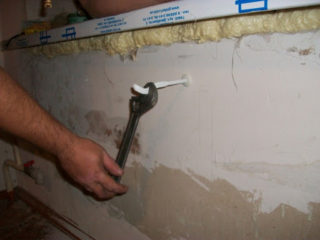
Procedure:
- Measurements of wall sections and radiator.
- Purchase of materials. You need to add a stock to the resulting size.
- Checking the presence of a distance between the heater and the place of installation of the film. If there is no free space, the battery suspension needs to be adjusted.
- Removing the radiator.
- Marks the wall where the brackets will be installed. Removing the fasteners on which the battery hangs.
- Inspection of the integrity of the masonry wall surface. Cracks, crevices and other defects should be repaired if necessary. Aligning the walls.
- Bonding the screen.
- Installing the hangers and radiator in place.
You can use staples instead of glue or liquid nails. It is important that they pass through the material and do not cause it to break.

